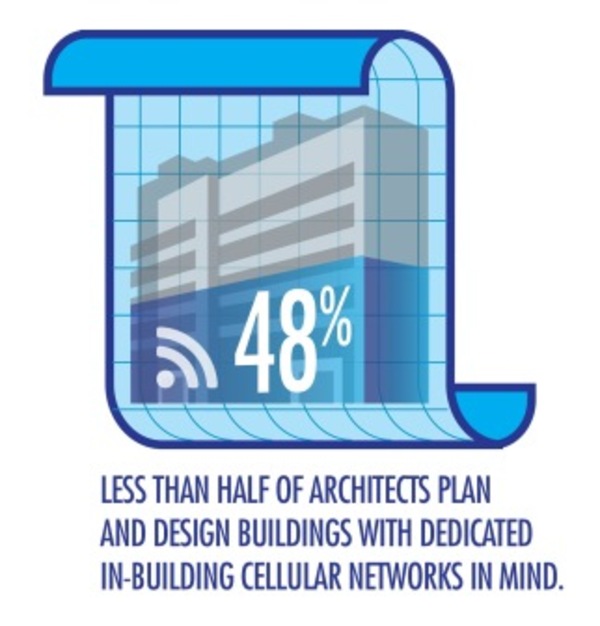
This massive and growing number of mobile devices and the large number of mobile connections that originate or terminate inside buildings (80%), highlight how important it is that we understand the nature of in-building network connectivity, particularly cellular connectivity.
The discussion about network connectivity is often dominated by technical considerations but it is essential that we broaden the discussion to include other key stakeholders such as architects, building/facility and real estate managers. A study that CommScope recently commissioned sought responses from this broader set of stakeholders, and the feedback makes for important reading.
Although a large majority of responses (73%) stated that cellular coverage in a building is as an ‘important’ or ‘very important’ factor, only slightly more than half (56%) always considered in-building coverage when working on projects. Interestingly, less than half (48%) of architects plan and design with dedicated in-building cellular connectivity in mind. This suggests that there is a gap between wants and needs; with building stakeholders appreciating the importance of cellular coverage in a building but not always deeming it critical enough to keep it top of mind. It is inevitable that this perception gap will close quickly.
Network connectivity for a building needs to be planned for in the same way as any other basic utility for a building – at the design stage. It would be unthinkable for water, gas and electricity ‘networks’ to be considered only after the building has been constructed. The same should apply to wireless network connectivity in a building.
What can we do to help architects, building/facility and real estate managers plan for wireless in the design process?







